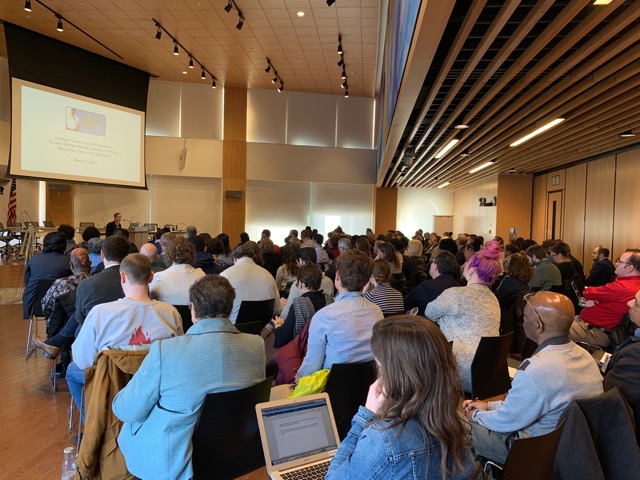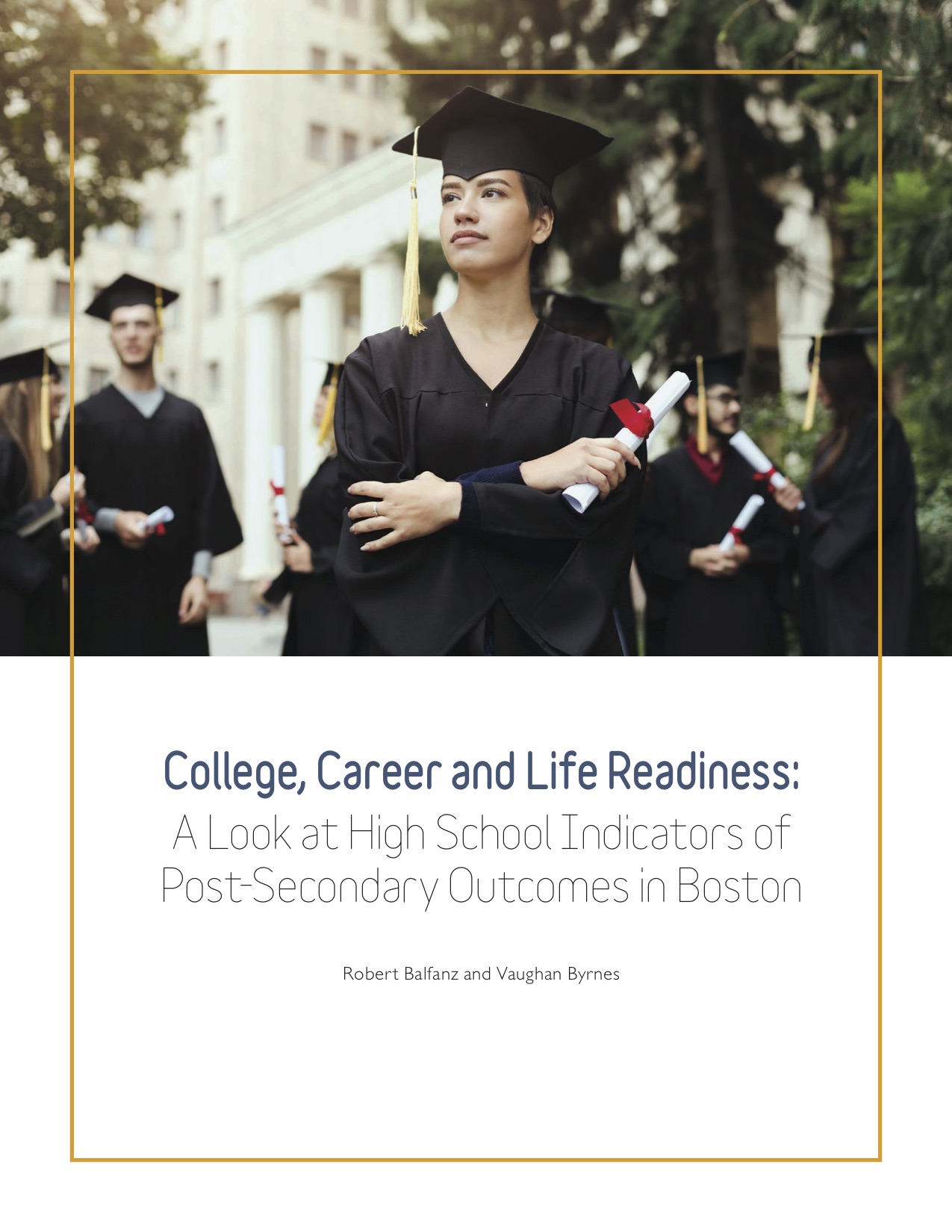College, Career and Life Readiness: A Look at High School Indicators
BPS Superintendent lays out a six-point plan to improve postsecondary success at Boston Opportunity Agenda event
March 1, 2019
On March 1, educators, policy makers, researchers and others who have a stake in the state of public education gathered at the Bolling Building in Roxbury for the release of new research from the Boston Opportunity Agenda (BOA) on high school indicators of postsecondary success.
Boston Public Schools Interim Superintendent Laura Perille opened the meeting and gave the audience a bonus. She announced the formation of a slate of six working groups, charged with specifying what the BPS must do to improve in these six areas:
- Academic rigor and graduation requirements
- School guidance counseling systems and postsecondary support
- Career education and pathways
- Alternative education redesign
- Early warning indicators, with strategies to keep kids on track
- Grade 7-12 school design (part of Build BPS’s long-term infrastructure improvement plan)
The working groups addressing these issues will be composed of internal stakeholders, including headmasters and central office leaders. They will meet frequently over the next several months to define a work plan in consultation with colleagues and outside experts. The goal is to synthesize recommendations from research, align those recommendations with best practices, and fuse their findings with existing expertise and knowledge. By July of 2019 the groups will contribute to the public implementation of short- and long-term plans for BPS high schools.
“In 2019 it is simply unacceptable to continue to let children from historically marginalized communities experience fewer opportunities than their peers,” said Perille. “We must have vision and chart a course for a future in which all BPS students are fully prepared for whatever their postsecondary journeys may bring.”
The BOA report, College, Career and Life Readiness: A Look at High School Indicators of Post-Secondary Outcomes in Boston, is a start in charting that future course. In the report, authors Robert Balfanz and Vaughan Byrnes dive into the research to determine how some academic indicators of success play out locally.
Perille noted, “What I admire most in this report is its utility. In identifying three specific things that indicate success, it can help us aim for the right goalpost in our improvement efforts.” While the report’s data came from the BPS system, the researchers and the interim superintendent encourage colleagues in charter and parochial schools to consider the findings as well.
Balfanz presented key findings from data about graduates of the Class of 2010 who’d been in BPS since at least 8th grade, and supplemental data from similar grads from the Class of 2012 (who completed a survey not administered to the Class of 2010). In brief, three behaviors were highly correlated to postsecondary success: At least 94 percent attendance (missing about two weeks of school or less per year), a grade point average of 2.7 (more Bs than Cs) and completion of the MassCore curriculum plus at least one high-level course, such as an Advanced Placement class.
Of students who exhibited all three of these behaviors, 83 percent earned a B.A. within seven years. Of those who had none, only 10% earned a B.A. in that time. With each additional indicator, performance went up. The behaviors were very predictive of postsecondary success—but, it turns out, only for four-year degrees. The link did not hold for completing a two-year associate’s degree. More study may identify better indicators for that goal, with the understanding that community college students often face more non-academic hurdles than their peers at four-year schools.
These three factors make good indicators, as they are measurable and actionable, and could help in the work of increasing the flow from high school to postsecondary success.
Clearly, attainment (or not) of any indicators is no guarantee of results. It merely outlines the odds, and the odds can be beaten in either direction. But, as Balfanz said, “The world has changed, so we need to change expectations of students so that high school is not the end point but the jumping off point for all. And we must change high schools to match.”
Boston Opportunity Agenda Executive Director Kristin McSwain introduced a panel of wide-ranging experts to discuss the report and the matter of preparation for postsecondary success generally. Engaged in the discussion were Bunker Hill Community College Associate Provost Clea Andreadis, BPS Interim Academic Superintendent and Josiah Quincy Upper School Headmaster Richard Chang, BPS Chief Academic Officer Charles Grandson, Saint Joseph Prep Head of School Thomas Nunan, and author and Harvard Graduate School of Education Lecturer Mandy Savitz-Romer.
All seemed to agree with Balfanz’s conclusion that the indicators in question helped reveal considerable room for improvement in these areas:
- Using indicators other than standardized testing, and even to think about “soft skills” indicators;
- Supporting students to push to higher levels, including dual enrolment, because, as Andreadis said, “helping students see themselves as college ready is significant.”
- Instilling in students the importance of being there—attendance matters, because belonging to a community is a fundamental human need, and because college, career and life readiness grow out of relationships, self-efficacy and perseverance, not just results in class. “We’ve gone beyond content mastery,” said Nunan. “The skills we need are relational and collaborative more than informational.”
- Providing academic and counseling support for students, and support for educators as well.
“We have a long way to go to help school leaders implement,” Grandson admitted, but as Superintendent Perille said in outlining the work ahead, “Friends don’t let friends take the easy way out.”


